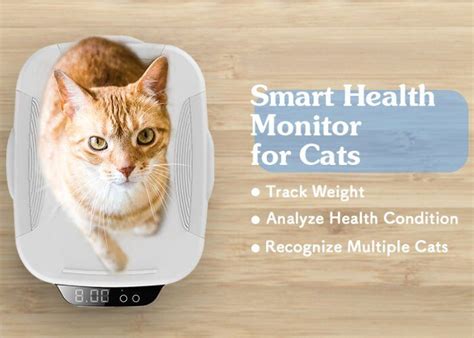Introduction
Cats are beloved companions that enrich our lives with unconditional love and companionship. However, ensuring their optimal health and well-being requires diligent monitoring and early diagnosis of potential ailments. This article delves into the crucial aspects of cat health monitoring and diagnosis, empowering pet owners with the knowledge and tools to safeguard their feline friends.

Why Cat Health Monitoring Matters
Regular health monitoring is paramount for cats because:
- Early detection: Promptly identifying health issues allows for timely interventions, preventing them from escalating into severe conditions.
- Prevention: Routine examinations and tests can detect early signs of diseases, enabling preventive measures to mitigate their impact.
- Increased longevity: By addressing health concerns early on, cats can enjoy a longer, healthier life expectancy.
Cat Health Monitoring Techniques
Comprehensive Physical Exams
Veterinary physical exams are essential for thorough health assessments. They involve:
- Visual inspection: Checking for any visible signs of illness, such as skin lesions, discharge, or abnormal posture.
- Palpation: Manually examining the body for lumps, swelling, or pain.
- Auscultation: Listening to the heart and lungs using a stethoscope to detect any irregularities.
Bloodwork and Urinalysis
Blood tests can reveal vital information about a cat’s overall health, including:
- Blood counts: Assessing red and white blood cell levels and platelet counts.
- Serum chemistry: Evaluating liver, kidney, and thyroid function, as well as electrolyte levels.
- Urinalysis: Analyzing urine composition to identify signs of urinary tract infections, kidney disease, or diabetes.
Imaging Diagnostics
Imaging techniques provide non-invasive insights into a cat’s internal structures and organs. These include:
- X-rays: Capturing images of bones, joints, lungs, and abdomen.
- Ultrasound: Using sound waves to create detailed images of soft tissues, such as the heart, kidneys, and liver.
- Computed tomography (CT) scans: Combining X-rays to generate cross-sectional images of the body.
Cat Health Diagnosis
Based on the results of health monitoring, veterinarians can accurately diagnose various cat health conditions, such as:
- Infectious diseases: Caused by bacteria, viruses, or parasites, including feline leukemia, feline immunodeficiency virus, and urinary tract infections.
- Cancer: Abnormal cell growth that can affect various organs.
- Cardiovascular disease: Conditions affecting the heart and blood vessels, such as heart murmurs, arrhythmias, and cardiomyopathy.
- Respiratory disease: Affecting the lungs and airways, including asthma, bronchitis, and pneumonia.
Strategies for Early Detection
Timely detection of cat health issues is crucial. Here are effective strategies for early detection:
- Regular veterinary checkups: Cats should receive routine checkups twice a year or more frequently if they are older or have health concerns.
- Observe your cat’s behavior: Be attuned to changes in appetite, litter box habits, energy levels, or grooming.
- Monitor vital signs: Take your cat’s temperature and heart rate regularly at home.
- Know the signs: Familiarize yourself with common symptoms of feline health conditions, such as vomiting, diarrhea, coughing, or sneezing.
Improving Cat Health Monitoring and Diagnosis in 2025: AI and Wearables
The future of cat health monitoring and diagnosis holds exciting advancements. Artificial intelligence (AI) and wearable technology show great potential for revolutionizing this field.
- AI-powered diagnostics: AI algorithms can analyze data from health monitoring devices and medical records to identify patterns and predict health risks.
- Wearable health trackers: Wearable devices can continuously monitor vital signs, sleep patterns, and activity levels, providing valuable insights for early detection of health concerns.
Benefits of Precision Pet Care
Precision pet care, enabled by advanced monitoring and diagnosis techniques, offers significant benefits for cats:
- Improved accuracy: AI-powered diagnostics can enhance the accuracy of health assessments, leading to more targeted and effective treatments.
- Early intervention: Wearable health trackers facilitate early detection of health issues, allowing for prompt interventions and better outcomes.
- Personalized care: Precision pet care tailors treatments to each cat’s individual needs, ensuring optimal health and well-being.
Conclusion
Cat health monitoring and diagnosis are essential for maintaining the well-being of our feline companions. By regularly monitoring their health, observing their behavior, and utilizing advanced diagnostic tools, pet owners can play a pivotal role in ensuring their cats’ happiness and longevity. As technology advances in 2025 and beyond, AI and wearable health trackers promise to revolutionize the field of veterinary medicine, providing even more precise and personalized care for our beloved cats.





















